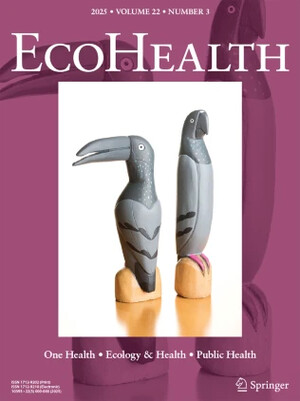
Poor performance of the rapid test for human brucellosis in health facilities in Kenya
Abstract
Human brucellosis is considered to be an important but typically under-diagnosed cause of febrile illness in many low and middle-income countries. In Kenya, and throughout East Africa, laboratory diagnosis for the disease is based primarily on the febrile antigen Brucella agglutination test (FBAT), yet few studies of the diagnostic accuracy of this test exist. Assessment of the performance of the FBAT is essential for its appropriate clinical use, as well as for evaluating surveillance data reported by public health systems. To assess FBAT performance, we collected sera from people with symptoms compatible with brucellosis attending two health facilities in Busia County, Kenya. Sera were tested using the FBAT and results compared with those from the Rose Bengal Test (RBT), an assay with well-known performance characteristics. Positives on either test were confirmed using the classical serum agglutination test (SAT)-Coombs test combination and a rapid IgM/IgG lateral flow immunochromatography assay (LFA). A questionnaire focussing on known risk factors for exposure to Brucella spp. was also conducted, and relationships with FBAT positivity examined using logistic regression. Out of 825 recruited individuals, 162 (19.6%) were classified as positive using the FBAT. In contrast, only eight (1.0%) were positive using the RBT. Of the 162 FBAT positives, one (0.62%) had an atypical agglutination in SAT and three (1.9%) showed low Coombs titres. Out of 148 FBAT positive individuals tested using the LFA, five (3.4%) were IgM positive and none were IgG positive. Poor or no correlation was observed between FBAT results and most established risk factors for Brucella infection. We observed substantial disagreement between the FBAT and a number of well-known serological tests, with the majority of reactive FBAT results appearing to be false positives. Poor FBAT specificity, combined with a lack of confirmatory testing, strongly suggests overdiagnosis of brucellosis is common in this low prevalence setting. This is expected to have important economic impacts on affected patients subjected to the long and likely unnecessary courses of multiple antibiotics required for treatment of the disease.
Citation
Glanville, W.A. de, Conde-Álvarez, R., Moriyón, I., Njeru, J., Díaz, R., Cook, E.A.J., Morin, M., Bronsvoort, B.M. de C., Thomas, L.F., Kariuki, S. and Fèvre, E.M. 2017. Poor performance of the rapid test for human brucellosis in health facilities in Kenya. PLoS Neglected Tropical Diseases 11(4): e0005508.









